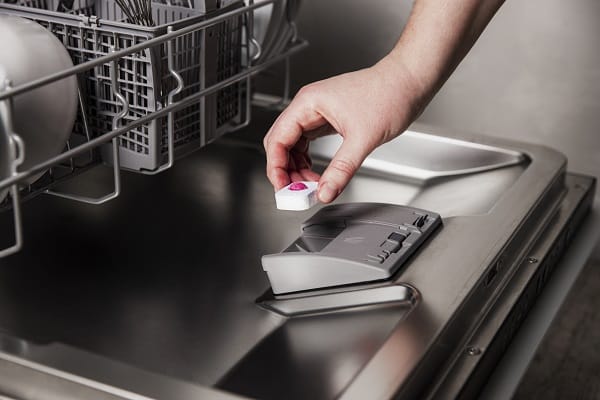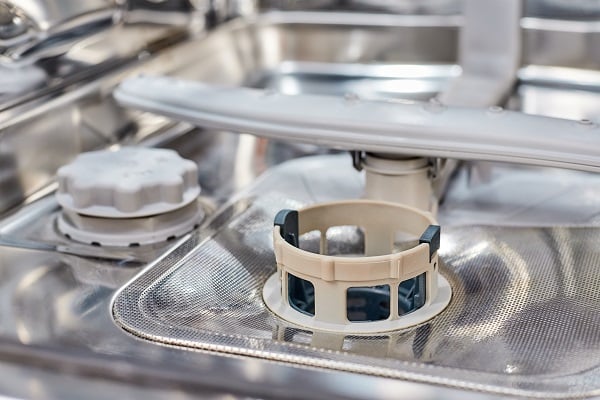Maintaining your dishwasher is crucial for its longevity and optimal performance. A poorly maintained dishwasher can lead to many problems, including ineffective cleaning, unpleasant odors, and even mechanical failures that could cost you a lot of money in repairs or replacements. This article serves as a complete guide to dishwasher maintenance. From understanding the basic components of your dishwasher to setting up a regular cleaning schedule, you’ll find actionable tips to keep your appliance in top condition.
Contents
Understanding Your Dishwasher

Understanding the basic components of your dishwasher is the first step in effective maintenance. Most dishwashers consist of key parts like spray arms, filters, and a detergent dispenser. Knowing how these parts function can help you identify issues early and understand what needs regular cleaning or potential replacement.
Different dishwasher models have unique features and components. It’s essential to read the user manual specific to your model to tailor your maintenance routine effectively. Knowing your dishwasher’s model can also be beneficial when ordering replacement parts or explaining issues to a repair technician.
Regular Cleaning Schedule

A regular cleaning schedule is vital for the longevity and efficiency of your dishwasher. Cleaning it once a month can prevent food particles from building up and causing unpleasant odors. Regular cleaning also ensures that the spray arms and filters function optimally, leading to cleaner dishes every cycle.
The benefits of a regular cleaning schedule extend beyond just cleanliness. A well-maintained dishwasher runs more efficiently, using less water and energy. This not only lowers your utility bills but also extends the appliance’s lifespan, saving you money in the long run.
Cleaning the Exterior

The exterior of your dishwasher, especially the control panel and door edges, can collect fingerprints, grime, and food particles. A simple wipe-down with a damp cloth can go a long way in keeping the exterior looking new. For stubborn stains, a mixture of water and mild detergent can be effective.
It’s important to use the right materials when cleaning the exterior to avoid damaging the finish. Microfiber cloths are a good choice as they are gentle yet effective. Avoid using abrasive cleaners or pads as they can scratch and dull the surface, diminishing the appliance’s appearance over time.
Cleaning the Interior

The interior of your dishwasher is where the real cleaning happens, but it’s also where food particles, soap scum, and mineral deposits can accumulate. Ignoring these can lead to problems like poor cleaning performance and unpleasant odors. To clean the interior, start by removing the racks and washing them separately in warm, soapy water.
Next, focus on the spray arms and filters. The spray arms can be detached and cleaned with a soft brush to remove clogs. Filters can often be twisted off and should be rinsed under hot water. For a thorough clean, you can run a dishwasher cleaning cycle using a specialized cleaner or a cup of white vinegar placed on the top rack.
Using the Right Detergent

The type of detergent you use in your dishwasher can significantly impact its cleaning performance. There are various options available, including tablets, liquid, and powder detergents. Tablets are convenient but can be more expensive, while liquid detergents are versatile but may require pre-rinsing.
Choosing the right detergent also depends on your local water conditions. Hard water areas may require detergents with water softeners to prevent mineral buildup. Always refer to your dishwasher’s manual for specific recommendations on detergent types and quantities. Using the correct detergent not only ensures clean dishes but also maintains the efficiency of your appliance.
Checking and Replacing Parts

Regularly inspecting the various components of your dishwasher can help you identify parts that are worn out or damaged. Pay close attention to seals, hoses, and spray arms. Cracked or loose seals can lead to leaks, while damaged hoses can cause water supply issues.
Knowing when to replace these parts is crucial for maintaining your dishwasher’s performance and preventing more serious problems. For instance, a worn-out seal can be easily replaced to prevent leaks, while a malfunctioning spray arm can be ordered and installed without professional help. Keeping an eye on these parts and replacing them when necessary ensures that your dishwasher runs smoothly and efficiently.
Troubleshooting Common Issues

Even with regular maintenance, dishwashers can sometimes run into issues. Common problems include water not draining properly, dishes not getting clean, and strange noises during operation. Knowing how to troubleshoot these issues can save you time and potentially expensive service calls. For example, water not draining could be due to a clogged filter, which is easily cleaned.
However, not all issues can be resolved with DIY solutions. If you’ve tried troubleshooting and the problem persists, it may be time to consult a professional. Electrical issues or motor malfunctions are best left to experts. Knowing when to attempt a fix yourself and when to call in a technician is crucial for the long-term health of your appliance.
Final Thoughts on Dishwasher Care
Maintaining your dishwasher is not just a one-time task but an ongoing commitment. Regular cleaning, timely replacement of worn-out parts, and seasonal adjustments can significantly extend the life and efficiency of this essential kitchen appliance. By taking proactive steps, you can prevent common issues like poor cleaning performance, unpleasant odors, and even mechanical failures. This comprehensive guide aims to equip you with the knowledge and tips needed to keep your dishwasher in top condition. Remember, a well-maintained dishwasher is not only more efficient but also more cost-effective in the long run.



